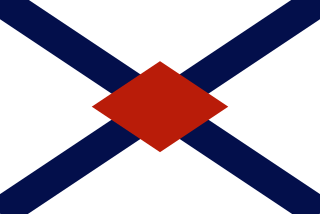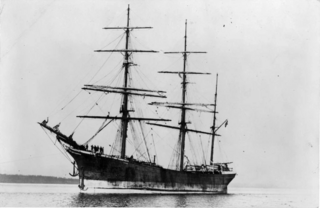Leonidas was a labour transport ship (schooner) that played an important role in the history of Fiji. She had been earlier used to carry indentured labourers to the West Indies, having transported 580 Indian indentured labourers to St Lucia in 1878. Captained by McLachlan, the ship departed from Calcutta, India on 3 March 1879 and arrived at Levuka, Fiji, on 14 May that year. The indentured labourers who disembarked were the first of over 61,000 to arrive from the Indian subcontinent over the following 37 years, forming the nucleus of the Fiji Indian community that now numbers close to forty per cent of Fiji's population.

The Syria was a 1,010 ton, iron sailing ship with a length of 207.7 feet, breadth of 34.1 feet and depth of 20.8 feet. She was built by William Pile of Sunderland for the Nourse Line, named after the Syria River in Karnataka, India and launched in 1868. She was primarily used for the transportation of Indian indentured labourers to the colonies.
Newnham was the first steamship to bring Indian indentured labourers to Fiji, arriving at Suva on 23 July 1884 carrying 575 passengers. The 1296 ton steamer took only 38 days to reach Fiji as it was able to take the shorter route through the Timor sea.
The Howrah was an iron hulled sailing ship of 1,098 tons, built at Sunderland in 1864 by Pile, Spence and Company. She arrived in Fiji on 26 June 1884 carrying 575 passengers.
Pericles, named after the Athenian leader Pericles, was a 1,598 ton, iron hulled, three masted sailing ship, that was built by W. Hood & Co of Aberdeen, and launched in July 1877 to transport wool for the Aberdeen Line.
Ganges was the first of three Nourse Line ships named for the Ganges river in northern India.
Boyne was a 1,403 ton, Nourse Line sailing ship that T.R. Oswald of Southampton built in 1877. She was referred to as the "Hoodoo Ship" for the number of mishaps that occurred to her. She wrecked in 1886.
Bayard was a three masted, 67 metre long, 1,028 ton, sailing ship built by T. Vernon and Son, Liverpool for the Hall Line in 1864. In 1868 she was transferred to Sun Shipping Company and in 1881 sold to Foley and Company.
The Moy was a 1,697 ton, iron sailing ship with a length of 257.6 feet (78.5 m), breadth of 38.3 feet (11.7 m) and depth of 23.2 feet (7.1 m). She was built by Russel & Company for the Nourse Line, named after the River Moy in northwest of Ireland and launched in May 1885. She was primarily used for the transportation of Indian indenture labourers to the colonies. Details of some of these voyages are as follows:

The Nourse Line was a shipping company formed by Captain James Nourse in 1861. After taking delivery of his first ship, the Ganges, in 1861, Nourse went on to build up one of the last great fleets of sailing ships.
Danube, a 1,459-ton sailing ship named after the second longest river in Europe, was built in 1890 for the Nourse Line.
For other ships with a similar name, see HMS Jumna.
British Peer was a 1428-ton three-masted iron sailing ship built for the British Shipowners Company at the Harland and Wolff yards in Belfast, Ireland, in 1865. She was 247.5 feet (75.4 m) long, 36.4 feet (11.1 m) wide and 22.5 feet (6.9 m) deep. She was bought by the Nourse Line in 1883, and was the fastest vessel in their fleet until British Ambassador was commissioned. In 1878, however, British Peer's sailing power was compromised when alterations were made to increase her tonnage by lengthening her hull by 32 feet (9.8 m), and she was never as fast again. She carried a crew of 23, including her master.

The Ems was a 1,829 ton, iron sailing ship with a length of 270.7 feet (82.5 m), breadth of 39 feet (12 m) and depth of 22.5 feet (6.9 m).
SS Virawa was British India Steam Navigation Company (BI) steamship. She was launched in Scotland in 1890 and scrapped in India in 1921. Her trades included taking horses from Australia to India, and indentured labourers from India to Fiji and Trinidad. In 1899 she was a troop ship in the Second Boer War.
SS Fazilka was a British India Steam Navigation Company (BI) steamship. She was built in England in 1890, operated mostly in the Indian Ocean, and was wrecked in the Nicobar Islands in 1919. She was a troop ship in the Second Boer War and the First World War. From 1901 to 1907 she took Indian indentured labourers to Fiji.
SS Fultala was a British India Steam Navigation Company (BI) steamship. She was built in England in 1890, operated mostly in the Indian Ocean, and was scrapped in India in 1923. She was a troop ship in the Second Boer War and the First World War. From 1901 to 1906 she took Indian indentured labourers to Fiji.

Ganges was the second Nourse Line ship to be named Ganges. The first Ganges was built in 1861 and wrecked in 1881. Ganges was a 1,529-ton iron barque, built by Osbourne, Graham & Company of Sunderland and launched on 25 March 1882. She was 241 feet (73 m) long, with a beam of 37.2 feet (11.3 m) and a draught of 22.5 feet (6.9 m).
Between 1879 and 1916, tens of thousands of Indians moved to Fiji to work as indentured labourers, especially on sugarcane plantations. Repatriation of indentured Indians from Fiji began on 3 May 1892, when the British Peer brought 464 repatriated Indians to Calcutta. Various ships made similar journeys to Calcutta and Madras, concluding with Sirsa's 1951 voyage. In 1955 and 1956, three ships brought Indian labourers from Fiji to Sydney, from where the labourers flew to Bombay.



